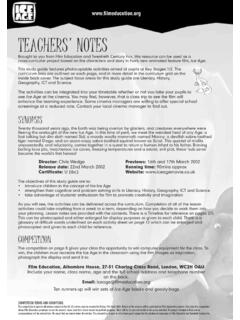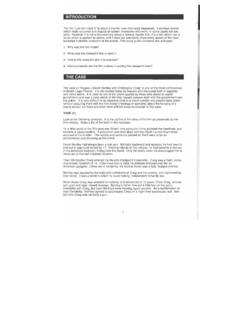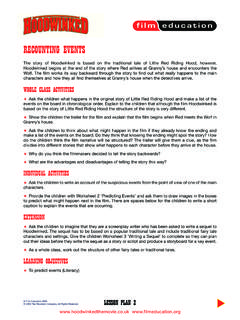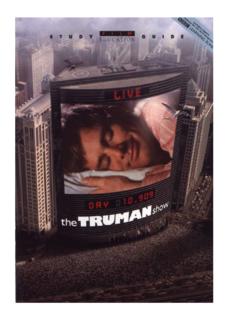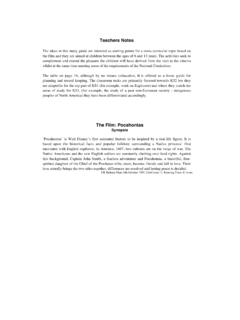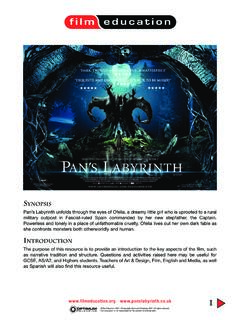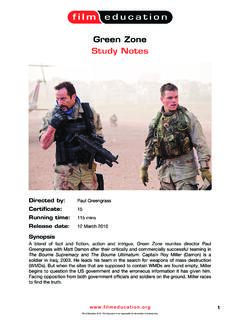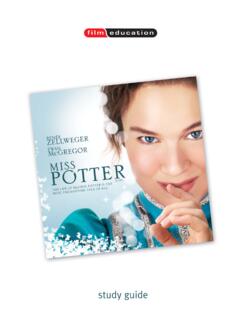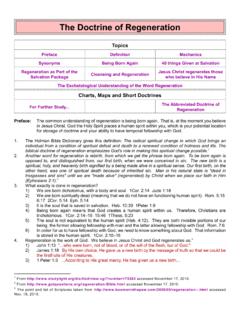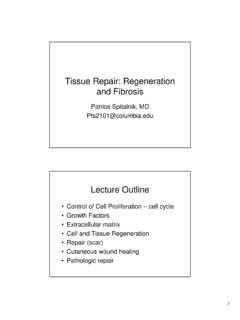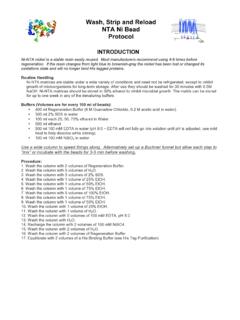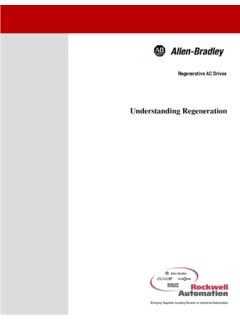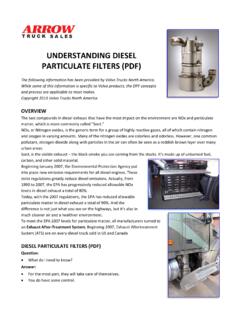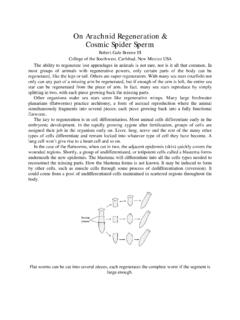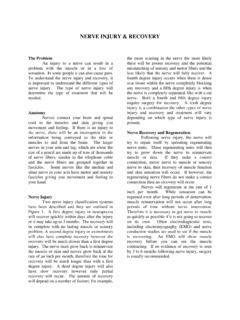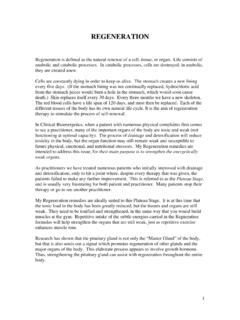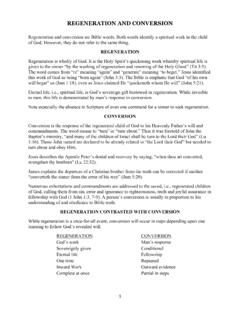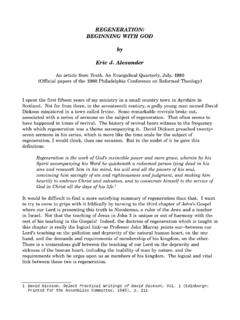Transcription of REGENERATION TEACHERS' NOTES SYNOPSIS - Film Education
1 REGENERATION TEACHERS' NOTESSYNOPSISThe film ' REGENERATION ' is about a real life encounter that occurred at Craiglockhart War Hospital in 1917between Dr William HR Rivers (Jonathan Pryce, an army psychologist, and the poet Siegfried Sassoon(James Wilby). The story is also about the young poet Wilfred Owen (Stuart Bunce) whose support fromSassoon enabled him to write poetry encapsulating the horrors of the First World is tormented by doubt about the morality of what is being done in the name of medicine. The filmcontains vivid imagery of war and death and contrasts the devastation of war with the tenderness ofanother patient, Billy Prior's, love affair with Sarah a factory girl. The story questions whether those whohave been broken by war - or those like Sassoon whose moral courage have removed them from the battlefront - can or should achieve regenerationDirector Gillies MacKinnon Certificate 15 Running time 113 minsINTRODUCTIONAs we rapidly approach the end of the twentieth century two events which have taken place over the lasthundred years still cast their shadow over the ways in which we think today - the First World War(1914-1918) and the looking at the film ' REGENERATION ' we are seeing the ways in which this legacy continues.)
2 The poetVernon Scannell (born 1922) begins his poem The Great War':"Whenever war is spoken ofI findThe war that was Great invades the mind:"For some reason, which we will explore later, the Great War, or First World War remains a touchstone forour imagination and for historians throughout this could say that from a historical perspective the ways in which we in the 21st century and people beforeus, perceive the First World War is not only through history books but also through the poetry and largeamount of literature on the Great War which has appeared outlook is formed through the culture which has developed around the war itself. One could say thatthe poet Lieutenant Wilfred Owen MC (1893-1918) has had a greater effect on many people's view of thewar than, for instance, a history book on the First World War. War is an ugly thing, but not the ugliest of things: the decayed and degraded state of moral andpatriotic feeling which thinks nothing worth a war, is worse.
3 A war to protect other human beingsagainst tyrannical injustice; a war to give victory to their own ideas of right and good, and which istheir own war, carried on for an honest purpose by their own free choice - is often the means oftheir REGENERATION John Stuart Mill (1806-1873) Philosopher and Economist (Taken from Dissertations andDiscussions-The Contest in America (1859) which John Stuart Mill wrote in opposition tothe proposal that England should side with the slave-owning Confederacy during theAmerican Civil War (1861-1865)HISTORICAL SOURCESIn both the novel and the film of REGENERATION you, as a student of history, are faced with the tact that thetrue historical story of Siegfried Sassoon and Wilfred Owen has been filtered down to us through a numberof sources The events shown in the film, the characters and their actions are, as Pat Barker points out,about a mixture of historical fact and the different ways in which we could find out about what happened at Craiglockhart War Hospitalin 1917.)
4 The events are recorded in autobiographies written after the war by Siegfried Sassoon. 'Sherston'sProgress' (The Complete Memoirs of George Sherston) and Robert Graves' Goodbye to All That'. Wilfred Owen writes about his meeting with Sassoon and his own experiences of the First World Warin letters to his family and friends. The events are recorded in a number of history books. The events are interpreted in Pat Barker's novel ' REGENERATION '. The events are represented in the film ' REGENERATION '.As a historian what do you think are the advantages and disadvantages of using any of these five types ofsources as historical evidence?LANGUAGE AND THE FIRST WORLD WARIt is important to realise the ways in which the events of the First World War affected not only people'slives but also how they talked about the events which had occurred. There is no doubt that at the outbreakof the war in 1914, most people's views of what would happen were influenced by the way in which warhad been described in the past.
5 In his book 'The Great War and Modern Memory', Paul Fussell givesexamples of imagery of war that existed in 1914:A friend is a comradeThe enemy isthe foe, or the hostTo attack is to assailThe dead on the battlefieldare the fallenDead bodies constituteashes, or dustA soldier is a warriorIf you look at some of the poems in the appendices of this guide you will see that by 1917 these wordswere no longer appropriate. The First World War was not a war of charging horses, gallant attacks overopen countryside. It was a stalemate where death usually came from an unseen enemy and those who werekilled were often blasted into pieces. The memorial at Thiepval on the Somme in France lists over 70,000names of British soldiers whose bodies were never found. This was not war as had been seen Great War had not been fought in the manner of the nineteenth century. It was a new type of war -total war - and more importantly, a mechanised and technological and ideas changed after this experience Whilst never doubting the courage of those that diedone can say that the tragedy often lay in the ways in which they were killed.
6 The war, with its poison gas,high explosives and machine guns pitted against flesh introduced a whole new meaning into the idea ofwarfare. Fact and fiction are so interwoven in this book that it may help the reader to know what ishistorical and what is not .Pat Barker author of the novel ' REGENERATION ' (Author's Note)VISUAL IMAGESAs well as a new way of thinking about war there was also a new way of portraying war, both in paintingsand also in film. This process which developed after the Second World War has had a great influence onfilmmakers today. Whilst many films show historic and thrilling exploits of soldiers there have been otherswhich have questioned war and its outcome. There have been films which have shown the glory of war andthose which are anti-war. We need to consider this when looking at ' REGENERATION and think of what ourexpectations would be of both types of thinking about these two types or genres of film we need to consider what our expectations of eachwould be as members of a cinema-going audience.
7 What would we expect to see in each?TASKHow would you think that this change in the use of language might have affected historians? Do youthink that historians have to use a particular type of language? What would this he? How do youthink that it is different from the language of poets, such as, Siegfried Sassoon and Wilfred Owen?TASKMake a list of what your expectations would be of each of the war genres that exist, that is, gloryof war and anti-war you have seen the film ' REGENERATION ' compare it with the list of expectations that you havedrawn up and see which type of film it is. Was there anything in it which you did not expect?Could you repeat this process with different events in history? In looking at the First World War,how would, say, a military historian took at events as opposed to a social historian? Choose twodifferent events in history and explain how a military historian and a social historian would PERIOD OF THE FILMThe period covered by the film REGENERATION deals with the poet Siegfried Sassoon s stay at CraiglockhartWar Hospital after his statement Finished With The War A Soldier s Declaration had been read out in theHouse of was a military hospital for officers who were suffering from shell-shock.
8 At CraiglockhartSassoon met both Dr William H R Rivers, the distinguished anthropologist and psychiatrist (who was t obecome his life-long friend) and the poet, Wilfred Owen. Sassoon encouraged the young poet and after thewar edited and published Owen s Barker says that one of her initial inspirations for writing her novel REGENERATION which the film isbased upon, was visiting the forbidding and claustrophobic Craiglockhart Castle originally a thirteenthcentury keep. In 1916 the army requisitioned it and up until 1919 Craiglockhart was used as a militaryhospital for treating soldiers suffering from the nervous condition then known simply as Hospital produced its own in-housemagazine called The Hydra . The production of themagazine was encouraged by the hospital doctors,especially A J Brock (Owen s therapist) as part of thepatients therapy.
9 Both Brock and Rivers believed thatit was essential for shell-shock victims to be as activeas possible. The magazine was run by and for thepatients. Wilfred Owen was editor of The Hydra forsix issues from July 21, 1917. He published two newpoems by Sassoon, Dreamers and Wirers and(anonymously) two of his own poems, Song of Songs and The Next War which were the first of his poemsto appear in REGENERATIONOne of the difficulties the film crew for ' REGENERATION 'faced was the need to re-create the trenches of theFirst World War. During the seven weeks of principalphotography the cast and crew had to endure wind,rain and snow and worst of all several feet of dug trenches and used barbed wire and dummiesof dead soldiers and their horses to simulate thesqualor and horror of the scene in a field lust outsideAirdrie in Scotland. They were assisted in establishingan authentic look and feel to the film by appallingweather conditions which meant the army of extrashad to stagger through a sea of mud in sub-zero about the importance of locations and sets in films.
10 How do they contribute to the mood andatmosphere of the film? Can you think of other films in which the sets are not merely a backgroundor location but are conducive to the mood, tone and even the action of a film?Armistice Day (November 11) came a week after shooting had started. The cast and crew observed a twominute silence as a mark of respect for the soldiers who fought and died in the First World his ' NOTES From The Front', the director of the film REGENERATION Gillies MacKinnon records hisexperiences of filming on Armistice Day:"We were soaked to the skip knee-deep in freezing trenches, the camera and tracks were clogged withmud, everything took three times longer to accomplish. But we knew that we could go home at night towarm beds and, for us, there would be no bombardment." Surrounded by about a hundred prosthetic corpses all glistening with frost, the cast and crew observed atwo minute silence for Armistice Day.
